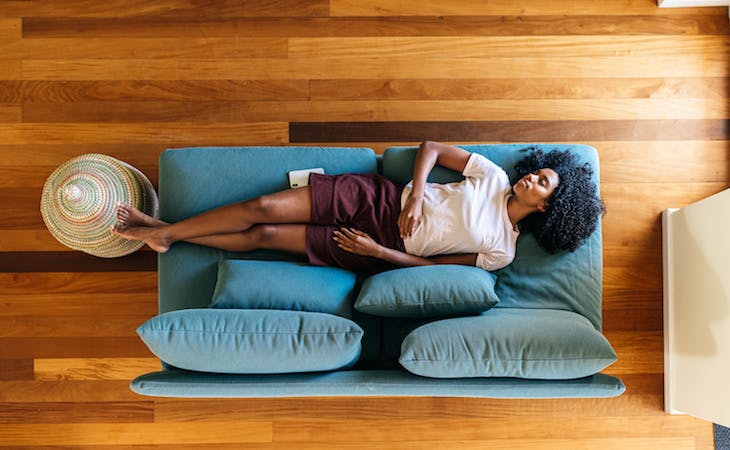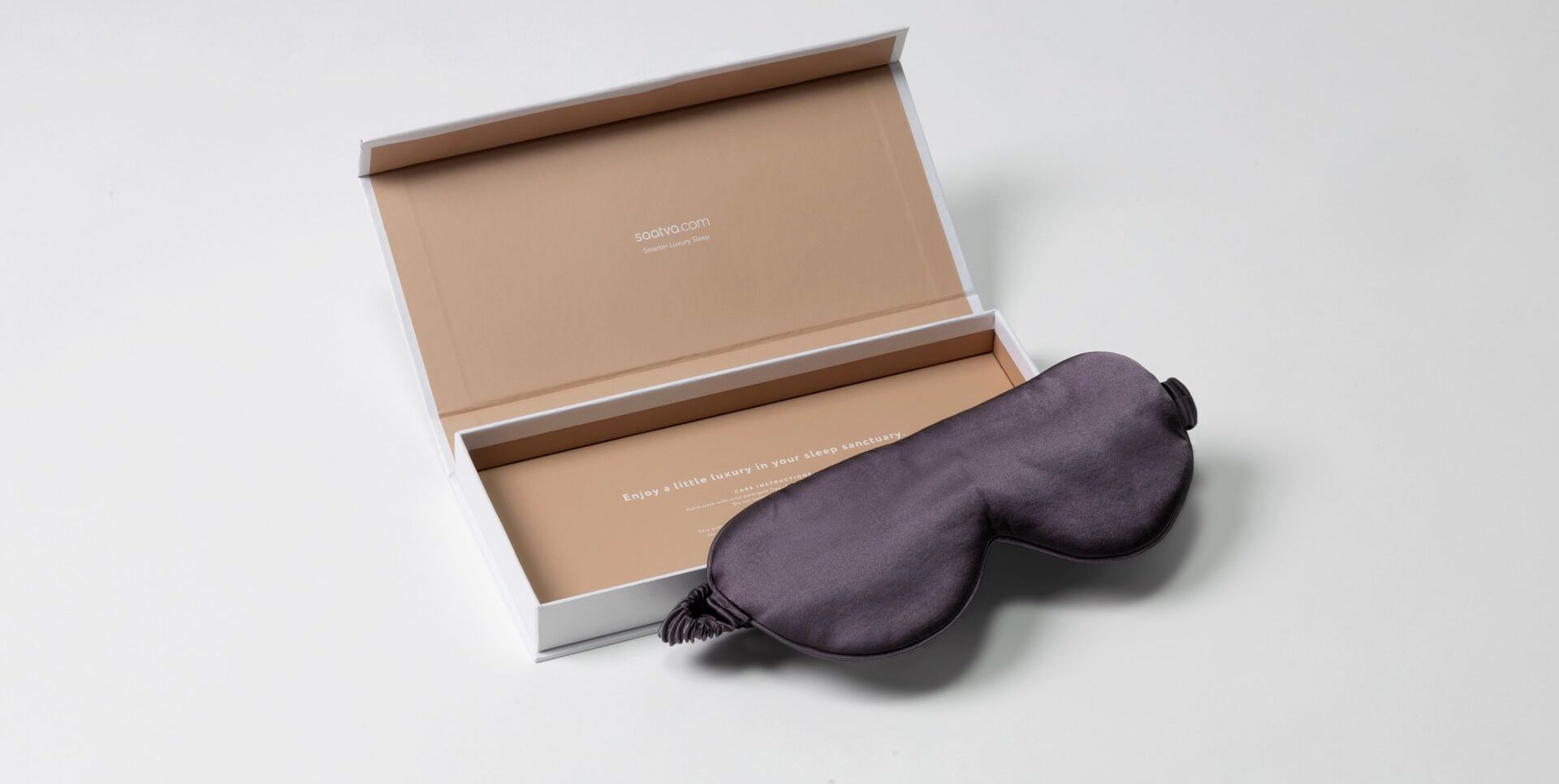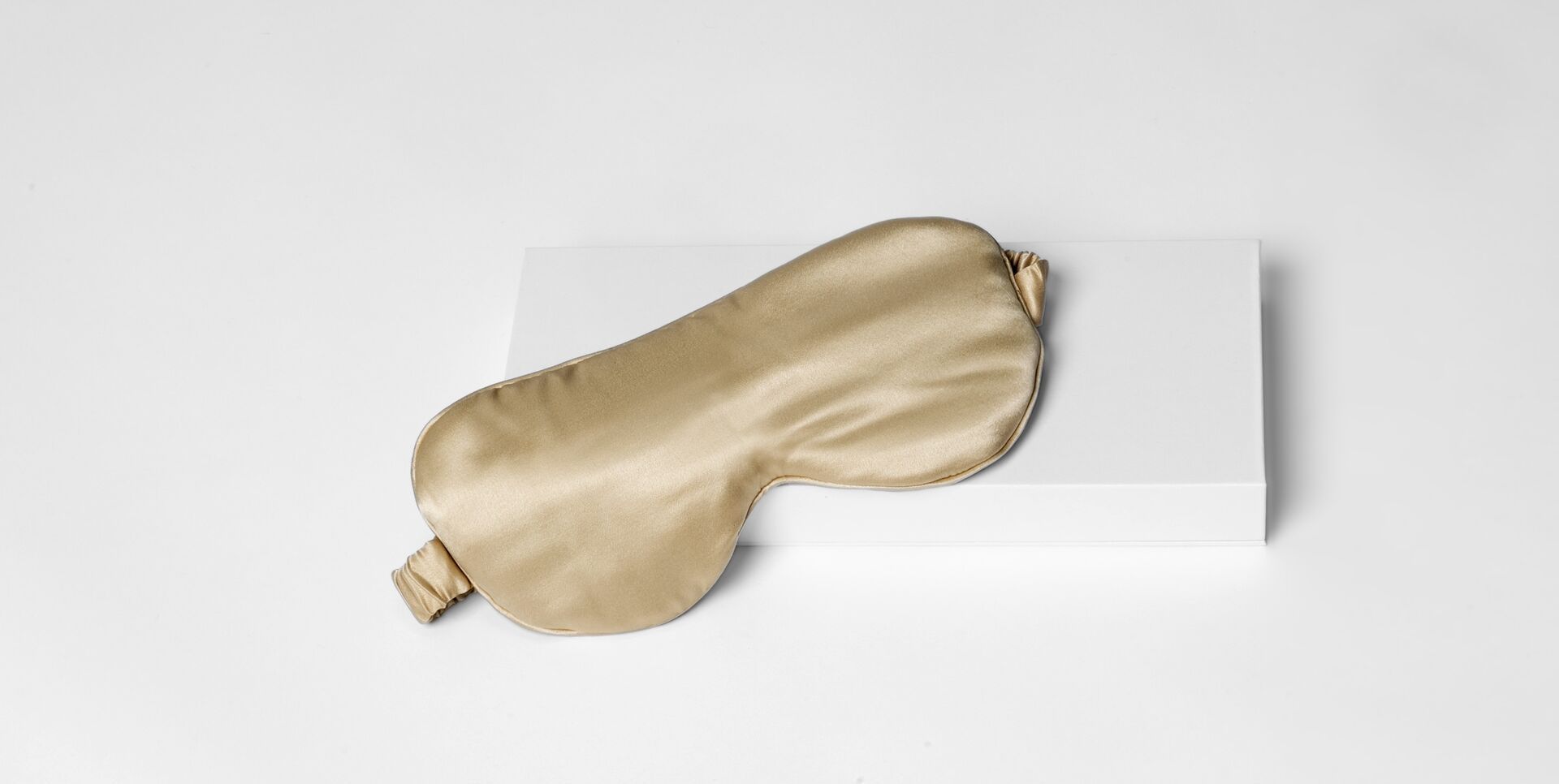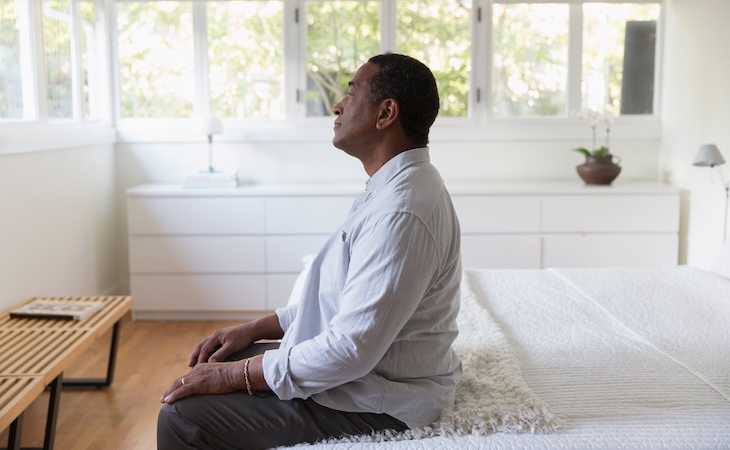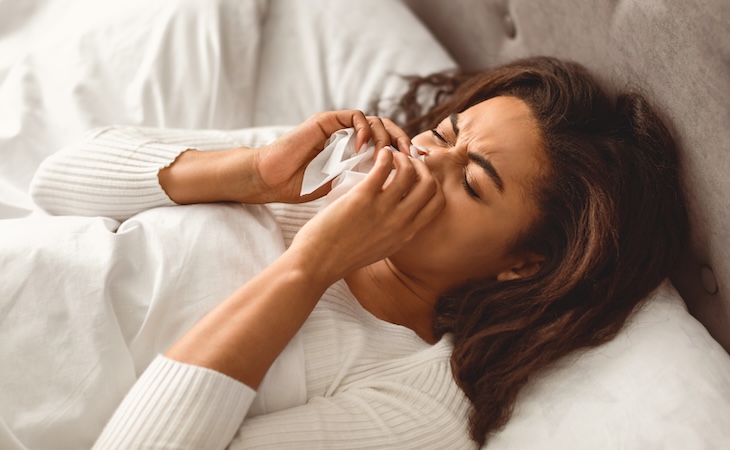Sometimes, it might feel impossible to get a good night’s sleep. When this happens, you likely end up exhausted and unable to be productive the next day.
One solution that may help you feel more rested and achieve better sleep at night? Taking a daytime nap. The NASA nap, specifically, is a type of daytime nap that’s currently trending.
In this article, we’ll explore exactly what the NASA nap is and why it’s popular as well as some of the other most common types of naps and their benefits. We’ll also share the best amount of time to nap and how to have a good daytime nap without ruining your sleep at night.
Types of naps: NASA naps, coffee naps, and more
First, let’s delve into the different types of power naps, including the NASA nap, that can be good for you. The type of nap ideal for you depends on your lifestyle.
NASA nap
You may wonder what a nap has to do with sleeping in space, but when you think about it, astronauts work hard and really can use those power naps!
So, for that reason, NASA astronauts are all about those short but meaningful power naps in any effort to have optimum alertness and productivity without being drowsy.
The NASA nap is an optimized 26-minute power nap for ultimate performance. [2] By not sleeping long enough to get into deeper stages of sleep, you won’t wake up groggy and can jump right back into your day’s agenda.
The NASA nap is an optimized 26-minute power nap for ultimate performance. By not sleeping long enough to get into deeper stages of sleep, you won’t wake up groggy and can jump right back into your day’s agenda.
Mid-day nap
Taking a mid-day power nap (sometimes called a cat nap) between 1 pm and 3 pm can help boost your energy and mental performance in the latter part of the afternoon. [3] Anyone can benefit from this type of nap.
Sports performance nap
Naps are an excellent way to improve your athletic performance. [4] If you have an important sports competition coming up, try taking a power nap beforehand to get yourself in the game, mentally and physically.
Shift worker nap
Working the night shift can do a number on your body clock. Strategically power napping before heading to work can help keep your schedule on track. [5]
Coffee nap
Also known as the “nap-a-latte,” a coffee nap involves drinking a cup of regular or decaf coffee and then setting a timer for a 20-minute siesta. [5] The theory is that the caffeine will kick in once you wake up so you’ll be raring to go.
New parent nap
Caring for a newborn means skipping out on sleep for yourself. Consider napping during the day while your child sleeps to minimize sleep deprivation.
Benefits of taking a nap
Is taking a nap good for you? According to research, there are plenty of reasons to squeeze a daytime nap, such as a NASA nap, into your schedule.
The top health benefits of taking a nap include:
Naps energize you
According to one study published in Frontiers in Psychology, participants who took a nap performed better and faster in a 5-meter shuttle run. [6] For the athletes studied, a 45-minute nap proved to be the most effective, over 25- and 35-minute durations. This may be because athletes need more recovery time than non-athletes.
Naps improve your mood
According to a study that examined 40 participants and categorized them into nappers vs. non-nappers, the participants who napped were able to tolerate frustrating scenarios slightly longer than those who didn’t nap. [7] Participants who napped also reported feeling less impulsive.
Naps boost your memory and cognitive function
After learning both single words and word pairs, one study had half of the participants nap after their lesson, while the other half watched DVDs. [8] While item memory (remembering a single word) decreased for both groups, associative memory (remembering the relationship between unrelated items) ranked higher in participants who had napped.
What’s the best amount of time to nap?
How long is an effective nap, exactly? A nap of around 20 minutes can be beneficial and restorative, says Daniel A. Monti, MD, founding director and CEO of the Marcus Institute of Integrative Health at the Sidney Kimmel Medical College at Thomas Jefferson University and author of Tapestry of Health.
Sleeping longer than that during the day can “reinforce a negative cycle of improper sleep at night,” he says, adding that “the majority of sleep should happen during the night between the hours of 10 pm and 7 am, according to circadian rhythms.”
In general, shorter naps are more efficient than longer ones. Your circadian rhythm has been carefully calibrated by millions of years of evolution, as well as more recent adaptations to cultural practices. [9]
Therefore, timing your naps is crucial if you want to extract the maximum benefit. Taking a nap under 30 minutes prevents you from entering deep sleep and suffering sleep inertia (a feeling of drowsiness) upon waking. [1]
That’s why the NASA power nap, at 26 minutes, makes so much sense. Your energy and alertness will get a boost, but you’ll still be able to get a good night’s sleep at night.
How to take a NASA power nap
Ready to get napping? Follow this advice to reap the benefits of taking a NASA nap—without ruining your ability to sleep at night.
Keep your nap short
As we’ve mentioned, shorter naps are better. But what happens if you nap for longer than 30 minutes or even 90 minutes? One study shared by the American College of Cardiology (ACC) looked at just that.
It found—alarmingly—that napping for 40 minutes or longer was “associated with a steep increase in the risk of developing metabolic syndrome—a collection of health conditions such as high blood pressure, high cholesterol, excess fat around the waist, and high blood sugar that all increase a person’s risk for heart disease.” [10]
The ACC also pointed out a study published in the June 2015 issue of Sleep that “tied naps longer than an hour to an 82% increase in cardiovascular disease,” furthering the theory that longer naps aren’t good for your health. [10]
So, the NASA nap, at a recommended 26 minutes, fits perfectly into this ideal nap range.
Nap in the early afternoon
Per the Mayo Clinic, taking a nap later than 3 pm will interfere with your nighttime sleep. [3] That’s why it’s best to nap earlier in the day if you can.
Create a relaxing nap environment
Try to mimic your sleep environment as best you can: Make sure the room you’re napping in is cool (60-67 degrees is the optimal sleep temperature) and dark. [3]
You may want to wear a sleep mask and put on a white noise machine or app to block out distractions. Listen to your body: When you feel that afternoon slump hit (before 3 pm!) try napping during this time since your body is already in drowsy mode.
FAQs
Is taking naps good for you?
Taking naps is good for your health. Research shows people who take naps experience better athletic performance, better moods, and better memory and cognitive function than those who don’t nap.
What is the NASA-approved nap time?
The NASA-approved power nap is 26 minutes long. This lets you get rest and be more alert and productive without falling into a deep slumber.
Is a 30-minute nap good for you?
Shorter naps are better for you. The best amount of time to nap is roughly around 20 minutes. Napping daily for longer than 30 minutes can make you feel groggy upon waking and is associated with higher instances of health conditions like high blood pressure and high cholesterol.
Is it OK to take a two-hour nap every day?
Longer naps aren’t good for your health. Research shows napping for an hour or more can lead to an increase in cardiovascular disease. Short daily naps of about 20 minutes are ideal.
How late is too late to take a nap?
Taking a nap later than 3 pm will make it hard to fall asleep at night. Aim to take a power nap earlier in the day if you can.
Is taking a nap after lunch bad?
No. In fact, many experts agree the best time to take a nap is right after lunch. That’s because most of us experience a post-lunch dip in energy around 1 pm. Take advantage of your body clock and enjoy an afternoon siesta.
Is taking a nap after working out good?
Yes. Taking a nap after working out can help support muscle recovery. [11] When you snooze, your pituitary gland releases growth hormone, which your muscles need to repair tissue. [12] Just keep in mind that it can be hard to fall asleep after exercising since working out increases your body temperature and endorphins.
Is taking a nap before studying good?
Yes. Taking a nap before studying can be beneficial. That’s because research shows a power nap can boost your memory. [1] The next time you have a test coming up, try taking a 20-minute nap before you crack open your textbook.
Is taking a nap with contacts bad?
Yes. In general, you shouldn’t take a nap with your contact lenses in. Sleeping with contacts can lead to a risk of infection and irritation. [13] Note there are extended-wear contact lenses you can wear while you sleep. Ask your eye doctor before adding any new products to your routine.
Take a nap on a Saatva mattress
The right mattress can help you reap all of the benefits of taking a nap. Saatva offers a wide range of high-quality mattresses to suit all sleep styles so you can easily find your perfect match. We also offer cozy bedding to upgrade your bedroom and make it as comfortable as possible for napping.
Take our online mattress quiz to determine which of our mattresses will help you get the most out of your daytime naps. All of our mattresses come with a 365-night home trial so you test one out before deciding if it’s right for you.
References
- Cleveland Clinic. Should You Take Power Naps? https://health.clevelandclinic.org/power-naps
- National Aeronautics and Space Administration. The benefits of napping for safety & How quickly can the brain wake-up from sleep? https://ntrs.nasa.gov/api/citations/20190033981/downloads/20190033981.pdf
- Mayo Clinic. Napping: Do’s and don’ts for healthy adults. https://www.mayoclinic.org/healthy-lifestyle/adult-health/in-depth/napping/art-20048319
- Mesas, A. E., Núñez de Arenas-Arroyo, S., Martinez-Vizcaino, V., Garrido-Miguel, M., Fernández-Rodríguez, R., Bizzozero-Peroni, B., & Torres-Costoso, A. I. (2023). Is daytime napping an effective strategy to improve sport-related cognitive and physical performance and reduce fatigue? A systematic review and meta-analysis of randomised controlled trials. British journal of sports medicine, 57(7), 417–426. https://doi.org/10.1136/bjsports-2022-106355
- Murphy, A. S., Wise, J., & Duffy, J. F. (2020). Sleep tips for shift workers in the time of pandemic. Southwest Journal of Pulmonary & Critical Care, 20(4), 128. https://pmc.ncbi.nlm.nih.gov/articles/PMC7189699/
- Boukhris, O., Abdessalem, R., Ammar, A., Hsouna, H., Trabelsi, K., Engel, F. A., Sperlich, B., Hill, D. W., & Chtourou, H. (2019). Nap Opportunity During the Daytime Affects Performance and Perceived Exertion in 5-m Shuttle Run Test. Frontiers in Physiology, 10, 779. https://doi.org/10.3389/fphys.2019.00779
- Goldschmied, J. R., Cheng, P., Kemp, K., Caccamo, L., Roberts, J., & Deldin, P. J. (2015). Napping to modulate frustration and impulsivity: A pilot study. Personality and Individual Differences, 86, 164-167. https://doi.org/10.1016/j.paid.2015.06.013
- Studte, S., Bridger, E., & Mecklinger, A. (2015). Nap sleep preserves associative but not item memory performance. Neurobiology of Learning and Memory, 120, 84-93. https://doi.org/10.1016/j.nlm.2015.02.012
- Loudon, A. S. (2012). Circadian Biology: A 2.5 Billion Year Old Clock. Current Biology, 22(14), R570-R571. https://doi.org/10.1016/j.cub.2012.06.023
- American College of Cardiology. Long-Naps, Daytime Sleepiness Tied to Greater Risk of Metabolic Syndrome. https://www.acc.org/about-acc/press-releases/2016/03/24/14/59/long-naps-daytime-sleepiness-tied-to-greater-risk-of-metabolic-syndrome
- Chennaoui, M., Vanneau, T., Trignol, A., Arnal, P., Gomez-Merino, D., Baudot, C., Perez, J., Pochettino, S., Eirale, C., & Chalabi, H. (2021). How does sleep help recovery from exercise-induced muscle injuries? Journal of Science and Medicine in Sport, 24(10), 982-987. https://doi.org/10.1016/j.jsams.2021.05.007
- Johns Hopkins University. Workout recovery: Sleep, eat, move, plan. https://wellbeing.jhu.edu/blog/2020/08/11/workout-recovery-sleep-nutrition-movement-planning/
- American Academy of Ophthalmology. Why You Should Never Sleep in Your Contact Lenses. https://www.aao.org/eye-health/tips-prevention/why-you-should-never-sleep-in-your-contact-lenses

